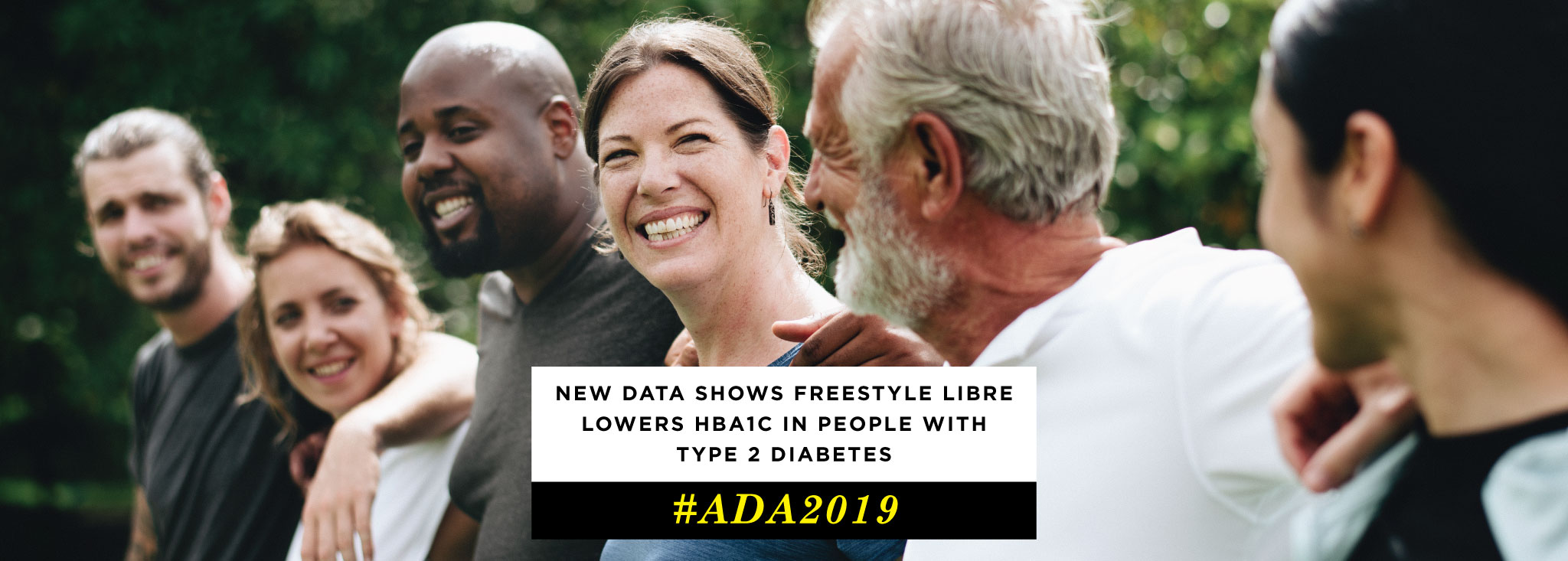New Data Shows FreeStyle Libre Lowers HbA1c in People with T2D
On June 8, Abbott released new data showing the impact of the FreeStyle Libre System on those living with type 2 diabetes (T2D). Research showed that usage significantly reduced Hemoglobin A1c (HbA1c) levels for people living with T2D receiving intensive insulin therapy. The results were analyzed from retrospective, real-world data in three countries across Europe and showed a nearly 1 percent drop in A1c from 8.9 percent to 8.0 percent.
The goal of analysis was to determine the impact on glycemic control in people living with T2D who used the FreeStyle Libre system. The extensive analysis displayed data from three studies of 360+ users in Austria, France and Germany who had been receiving intensive insulin therapy for an average of over eight years. Subjects averaged about 63 years of age and were assessed over a three-to-six-month span.
The showcasing of these results marks the first time researchers have evaluated real-world data from T2Ds using the FreeStyle Libre system.
“These real-world findings highlight how Abbott’s FreeStyle Libre system can fundamentally change how people manage their diabetes, especially for people living with type 2 diabetes,” said Helene Hanaire, M.D., University Hospital Center of Toulouse in Toulouse, France, and one of the study leads. “By using the real-time results, trends and patterns from the technology right at their fingertips, people with diabetes are becoming more actively engaged in making better decisions to control their blood glucose levels and improve their own health.”
Interestingly, the data displayed no differences based on age group, gender, body mass index (BMI), or duration of insulin use. Another randomized trial published earlier this year by Diabetes Care showed that the use of the FreeStyle Libre system could help improve glycemic control and lower A1c levels in T2D.
HbA1c levels reflect a patient’s average blood sugar over a three-month period and serve as the barometer for indicating risk of developing long-term diabetic complications. The recommended A1c goal for adults with diabetes is 7 percent, which is why the overall drop to 8 percent showcased in this data is certainly significant.
“Doctors tell us that FreeStyle Libre is changing the course of care for people with diabetes, and the combination of real-world data and clinical research is further proof that our technology delivers significant reductions in HbA1c in people with type 2 diabetes,” said Mahmood Kazemi, M.D., divisional vice president for Global Medical and Scientific Affairs., Diabetes Care, Abbott. “This adds to growing evidence from more than half a million users in real-world settings showing time after time, use of FreeStyle Libre is associated with improved blood glucose control and better health outcomes.”
The FreeStyle Libre system is currently being used across 46 countries by more than 1.5 million people, and Abbott has secured partial or full reimbursement in 33 countries at present, including the U.K. and the U.S. The 14-day system is currently offered for Medicare patients in the U.S. based on eligibility.
“With more than 425 million people living with diabetes around the world, there’s an immense opportunity for Abbott’s technology to change more lives and the future of those with diabetes,” added Kazemi.
This article is part of Beyond Type 2’s ADA 2019 coverage. For full ADA 2019 coverage, click here.





